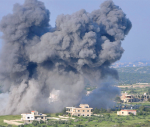You are here
NATO after Ukraine
Jun 04,2014 - Last updated at Jun 04,2014
Russia’s aggression in Ukraine has called into question NATO’s willingness and ability to protect its East European flank.
For a country like Poland, NATO’s lofty principle of collective defence, while essential to national security, remains, in the absence of appropriate military capabilities and on-the-ground practicability, merely a political commitment.
When Poland joined NATO 15 years ago, it was understood that Article 5 — the “all for one, and one for all” principle that provides for a collective response to an armed attack on any member — would be the cornerstone of the country’s security.
Since then, the allies have found numerous ways to anchor the obligations arising from Article 5 in operational practice.
The new Strategic Concept, adopted at the alliance’s 2010 Lisbon summit, established collective defence as one of its three main tasks, underscoring the importance of developing contingency plans, organising joint exercises and training, and creating “visible assurance” within member states. As a defining strategy, this agenda meets Polish expectations.
The contingency plans negotiated by Poland in 2008-2010 include strengthening the country militarily in the event of aggression from the East. Lithuania, Latvia and Estonia implemented similar plans.
Another practical step to improve NATO’s readiness to defend its eastern flank has been the organisation of joint military exercises, such as “Steadfast Jazz”, held in the Baltics and Poland in 2013. These exercises reaffirmed NATO’s seriousness about defending its eastern members.
No less important is the establishment of NATO institutions in Poland, in particular its Signal Battalion and Joint Force Training Centre, which Poland managed to retain despite reforms of NATO’s chain of command.
If nothing else, the institutional presence strengthens Poles’ sense of security — for many of us, the more NATO we have, the better.
The same principle applies to NATO’s Security Investment Programme. The fund has already spent more than 650 million euros ($835 million), for example, on modernising Poland’s air, naval and logistical bases.
Finally, under a June 2011 agreement, a United States aviation detachment, which organises joint training of F-16 and Hercules pilots, is operating in Lask, in central Poland — the first time that American troops have been permanently stationed on Polish territory.
This model of maintaining US forces in Central Europe should be developed further, because it is a symbolic confirmation of America’s commitment to the region.
These practical measures come at a time when Russia’s aggression in Ukraine has dispelled doubts about NATO’s importance. But recognising potential dangers is not the same as developing an effective response.
The strategic environment today is a far cry from that of 1997, when NATO leaders backed the membership bids of Poland, the Czech Republic and Hungary, and awarded Ukraine and Russia privileged partner status.
Indeed, Russia’s aggression in Ukraine compels NATO to redefine its relationship with Russia and Ukraine. In any case, the alliance’s September 2014 summit in Newport, Wales will need to develop a new strategic vision of this relationship.
To do so, NATO must answer four key questions. First, how committed is the US to Europe?
Although US President Barack Obama has shifted his focus towards the Asia-Pacific, reducing US forces in Europe, this needn’t weaken the alliance’s capabilities or response times. Europeans must nonetheless continue to advocate for the overriding importance of NATO’s transatlantic bond.
Second, how committed is Europe to NATO?
The 2008 financial crisis led to severe defence cuts, a dangerous policy that must be reversed as soon as possible.
This is not just a question of money; Europe must also develop military specialisations and joint capabilities that enhance the alliance as a whole.
If Europe’s own commitment is lacking, what hope is there for continuing US engagement?
Third, how should NATO redefine its relations with Russia?
In the wake of events in Crimea and eastern Ukraine, Russia’s privileged partnership with NATO is evidently outdated. This does not mean that the NATO-Russia Council should be disbanded. But NATO’s approach to Russia must change if it is to contain Russia’s destabilising aggression in Eastern Europe, the South Caucasus and Central Asia.
This is why the alliance needs to develop a new smart containment policy towards Russia that relies on political, diplomatic, financial and military tools.
Finally, how can we strengthen relations with Ukraine so that its citizens feel neither alone nor doomed to conflict and failure?
The West must show that it is politically on Ukraine’s side and encourage its pro-Western course. NATO should then strengthen military cooperation with Ukraine by implementing the provisions of the Charter on a Distinctive Partnership.
This means that the alliance will need to become actively engaged in reforming and rearming the Ukrainian armed forces.
NATO continues to be as relevant to today’s global order as it has been since 1949. But, in addition to shaping strategic priorities, it must have practical plans in place on the ground.
The writer, a member of the Polish Senate, was Poland’s defence minister from 2007 to 2011 and a member of the European Parliament from 2004 to 2007. ©Project Syndicate, 2014. www.project-syndicate.org












